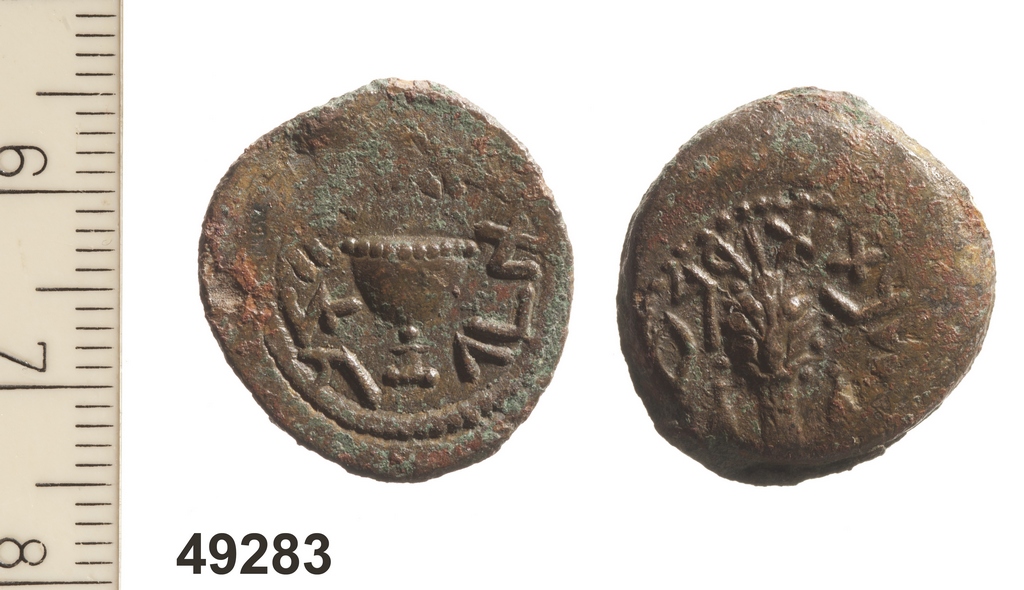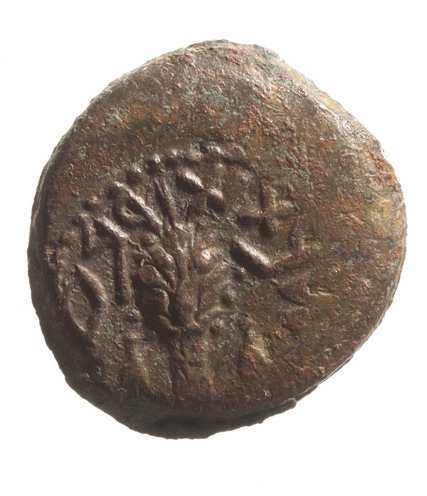Symbols of Sukkot (Feast of Tabernacles)

Sukkot and the Temple
Sukkot, known as the Feast of Tabernacles in Christian writings, was one of the three holidays where Jews would gather in the Temple in Jerusalem (the others being Passover and Shavuot). Sukkot was the easiest time of year to make the pilgrimage to the Temple, and hundreds of thousands of people would come and live in sukkot (booths) in Jerusalem. Sukkot was the most important Jewish festival before the destruction of the Second Temple. In the Mishna, the oldest codification of Jewish law, Sukkot is not even named but rather referred to as HaChag (The Holiday).
The Temple Mount was the heart of the celebrations of Sukkot. The best example of this is described in Maccabees 10 6-8. It describes how after the Maccabees cleaned the Temple, they celebrated what would be Channukkah in the manner of Sukkot because they had not been able to celebrate Sukkot properly in the Temple due to the restrictions of the oppressive Hellenistic regime. The 8 days of Channukkah were based on the 8 days of Sukkot, and Channukkah was celebrated with the four species of Sukkot.
 6And they kept eight days with joy, after the manner of the feast of the tabernacles, remembering that not long before they had kept the feast of the tabernacles when they were in the mountains, and in dens like wild beasts.
6And they kept eight days with joy, after the manner of the feast of the tabernacles, remembering that not long before they had kept the feast of the tabernacles when they were in the mountains, and in dens like wild beasts.
7 Therefore they now, carried boughs, and green branches, and palms for Him that had given them good success in cleansing his place.
8 And they ordained by a common statute, and decree, that all the nation of the Jews should keep those days every year.
(Maccabees 10 6-8. Translation from the Douay-Rheims 1899 American Edition of the Bible).
Coins and Symbolism
The four species of Sukkot, the lulav (palm branch), hadas (myrtle), aravah (willow), and etrog (citron), are probably to the most recognizable symbols of the festival. During the First and Second Jewish Revolts against the Romans (66-70 CE and 132-136 CE), Jews minted their own coins with Jewish symbols and messages like, “for the redemption of Zion.” This was an important way of spreading their message amidst illiteracy and difficulties in disseminating information.

1/4 shekel coin found by the Sifting Project. From First Revolt 69/70 CE.
This is a ¼ shekel coin found in 2010 by Yesnia Barcia, a volunteer at the Temple Mount Sifting Project. Made of bronze, the obverse shows a goblet and reads, “Redemption of Zion.” The reverse shows a lulav and reads, “4th year.” It is a coin from the first Jewish revolt, meaning that this coin dates to the year 69/70 and is from the last year that a Jewish Temple stood on the Temple Mount.
The goblet pictured may have been a pitcher for libations on the altar in the Temple. The Ramban thought it might represent the vessel that held the manna that escaped with the ark from the Holy of Holies before the Temple’s destruction. It also resembles a goblet featured on the arch of Titus, and is clearly an important vessel from the Temple even if we don’t know what it represents exactly.
Palm branches are symbolic of victory in the Hellenistic and Roman world as well as in Jewish iconography. The lulav can be depicted as the symbol of victory and vindication on the Judgement Day. Vayikra Rabba 30 describes how when a man emerges from before a judge holding palm branches, we know that the verdict was in his favor. The midrash relates that when the nation of Israel comes before the Almighty on Rosh Hashana in judgement, when Israel comes out with lulav in hand, celebrating Sukkot, the verdict was in its favor.

Close up of 1/4 shekel
On this coin, the lulav is closed and includes the arava and etrog like we have today. One of the ways that you can identify the hadas branches on this coin is the dots which are the fruits of the hadas. Interestingly, the Mishna says that one can’t use hadas branches with fruit, but it is possible that at the time of the First Revolt, this practice was acceptable. By the Second Revolt 70 years later, the coins no longer depict fruit on the hadas branches.
We do not have coins from the Second Revolt on the Temple Mount because Bar Kochba (the leader) and his forces never reached Jerusalem. Though the coins from the Second Revolt are very similar to those of the First Revolt, the differences are quite telling. In addition to the subtraction of the fruit of the hadas branches, the lulavs on the coins of the Second Revolt show only one hadas and one arava versus the many branches of hadas and arava on the coins of the First Revolt. This is according to the opinion of Rabbi Akiva, who was the spiritual leader of Bar Kochba and the revolt. Today, Jews follow the opinion of Rabbi Yishmael and the Rambam, and use multiple branches of hadas in order to beautify the mitzvah of shaking the lulav.

Coin dating to Second Revolt 132/133 CE. Photo Source from: www.amuseum.org
This is a coin from the Second Revolt. It is a silver sela dating to 132/133 CE. On the reverse, you can clearly see the lulav and etrog as described above with one branch of each type of tree and lacking fruit. In the 1950s, a letter was discovered from Bar Kochba ordering Judah Ben Manasseh to supply him with lulavs for his army so that they could celebrate the festival even in the midst of major battles. The importance of Sukkot was such that it has inspired celebration amidst the battles of Bar Kochba and the Maccabees, and has been a symbol of Jewish victory and identity on coins of the Jewish Revolts against the Romans. Yet one cannot separate the importance of Sukkot from the importance of the Temple and the Temple Mount. The obverse of this coin shows the Temple on the Temple Mount and was probably a stark reminder of what the Jews had been missing since the Temple’s destruction 72 years earlier. These coins, used as money, were also a calculated reminder of what being Jewish was about and what the Jews were fighting for.
A Few Ideas
I would like to share with you all a few ideas before we go into our celebration of the holiday of Sukkot. At our New Year party just now, our director Zachi Dvira gave a beautiful speech. In it, he talked about the idea that Sukkot is a holiday where we go back to basics and realize how grateful we are for the things that we have. This is a lot like the Sifting Project. We are grateful for the pieces of the Temple Mount that we have been able to recover, and our job now is to focus on what we have and do the research that will enrich our understanding of the Temple Mount. We are at the point now, where our work in the lab is enabling us to “find” understanding exponentially and is paramount even to some of the finds now being uncovered at the sifting site. May we have a productive year and be able to share our successes with you.
Discover more from The Temple Mount Sifting Project
Subscribe to get the latest posts sent to your email.


 6And they kept eight days with joy, after the manner of the feast of the tabernacles, remembering that not long before they had kept the feast of the tabernacles when they were in the mountains, and in dens like wild beasts.
6And they kept eight days with joy, after the manner of the feast of the tabernacles, remembering that not long before they had kept the feast of the tabernacles when they were in the mountains, and in dens like wild beasts.









Reblogged this on Kattukse Vrienden voor Israël.